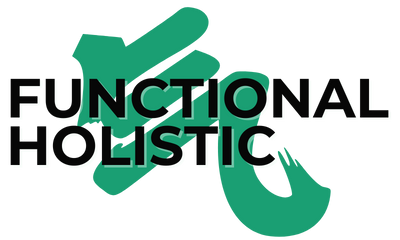What are Functional Strength Exercises?

Functional Strength Training: A Broad Umbrella for Tailored Goals
Strength training has long been recognized as a key component of fitness, but the term functional strength training is often misunderstood. Many wonder, “What exactly does functional mean?” The truth is, functional training doesn’t refer to a specific set of exercises or movements. Instead, it’s a broad umbrella term encompassing strength training designed to optimize performance for specific activities or goals. Whether you’re striving to lift heavier, increase endurance, or improve athletic performance, functional training is about preparing your body to perform at its best.
As a sports acupuncturist and TCM Practitioner (R.TCM.P.) with over a decade of experience, I’ve incorporated functional strength training principles into both my fitness and clinical practice. These principles have helped me and my clients achieve tailored goals—from injury recovery to enhanced performance—by focusing on mobility, balance, and sustainable strength development.
What Are Functional Strength Exercises?
Functional strength exercises are movements that mimic or support the activities you’re training for. They adapt to your goals, whether that’s lifting heavier weights, improving endurance, or excelling in a sport. Functional training doesn’t rely on a one-size-fits-all formula—instead, it aligns with your objectives to ensure optimal performance.
For example:
- Powerlifters focus on barbell squats and deadlifts to build raw strength.
- Runners incorporate single-leg exercises and core stability work to improve balance and prevent injuries.
- Gymnasts rely on bodyweight control, like pull-ups and planches, to master advanced movements requiring strength and coordination.
Functional exercises aren’t defined by the movements themselves but by how they support your unique goals.
Functional Training for Specific Activities
Functional training becomes truly effective when tailored to the demands of specific activities. Below are examples of how different types of functional strength exercises align with distinct goals:
Powerlifting
- Goal: Build maximum strength for heavy lifts.
- Key Exercises: Barbell squats, deadlifts, and bench press.
- Why Functional? These compound lifts develop raw power while engaging stabilizing muscles essential for safe and efficient movement under heavy loads. Accessory exercises like Romanian deadlifts or core work enhance stability and balance.
Endurance Sports
- Goal: Build strength to support stamina and durability.
- Key Exercises: Single-leg Romanian deadlifts, step-ups, and planks.
- Why Functional? Unilateral exercises address imbalances common in repetitive activities like running or cycling, while core stability work improves posture and stride efficiency.
Explosive Power
- Goal: Develop speed and athletic performance.
- Key Exercises: Olympic lifts (snatch, clean, and jerk), plyometrics (box jumps, medicine ball slams).
- Why Functional? These exercises train the body to generate maximum force in minimal time, enhancing explosiveness for sports like basketball or soccer.
Bodyweight Mastery
- Goal: Build strength and control using your own body weight.
- Key Exercises: Pull-ups, dips, and advanced skills like handstands or planches.
- Why Functional? Bodyweight training develops neuromuscular control and balance, which are critical for gymnasts and calisthenics enthusiasts.
General Fitness
- Goal: Improve overall strength, mobility, and endurance for daily life.
- Key Exercises: Compound lifts (squats, deadlifts), resistance band work, and cardio.
- Why Functional? These exercises train multiple muscle groups simultaneously, enhancing overall efficiency and adaptability.
The Role of Mobility in Functional Training
Mobility is a cornerstone of functional training. Whether you’re lifting weights or sprinting, mobility ensures your movements are fluid and efficient. It also:
- Reduces Injury Risk: By addressing stiffness or imbalances, mobility work helps prevent common injuries.
- Enhances Recovery: Dynamic stretches improve circulation post-exercise.
- Improves Performance: Greater range of motion allows for better technique in movements like deep squats or overhead presses.
Examples of mobility work:
- Dynamic Warm-Ups: Arm swings, leg kicks, or hip openers to prepare for movement.
- Post-Workout Stretches: Hamstring or shoulder stretches to aid recovery.
- Targeted Drills: Foam rolling or resistance band work to address specific restrictions.
Tailoring Your Training for Specific Goals
Strength training becomes most effective when aligned with your personal objectives. For example:
- Preventing Injuries: Focus on stabilizer muscles with exercises like side planks or external rotations.
- Explosive Performance: Prioritize dynamic lifts and plyometric drills.
- Improving Mobility: Incorporate specific stretches and joint rotations to address restrictions.
Proper form remains critical across all goals. Executing exercises with a full range of motion ensures safety and effectiveness, reducing the risk of setbacks.
Functional Training: The Takeaway
The true strength of functional training lies in its adaptability. It’s not about following a rigid formula but about crafting a program tailored to your unique needs. By balancing your priorities, committing to proper form, and integrating mobility work, you can create a routine that supports both immediate goals and long-term sustainability.
Whether you’re mastering heavy lifts, refining technical movements, or simply building strength for daily activities, functional training is all about helping you perform—and feel—your best.
Consistency drives results
By focusing on what matters to you and staying intentional with your routine, functional strength training can enhance performance, prevent injuries, and support overall well-being. Make your training work for you.






